|
|
It's
heartbreaking that the deaths of these innocents murdered by Armenian
terrorists in the 1970s and 80s were generally
dismissed in the press of the nations the murders took place. Most of the
killers got away with their crimes... and as far as the few who got caught:
While none of the assassins walked away scot free as did Soghoman Tehlirian (the
Armenian gunman who assassinated Talat Pasha in 1921), it's shocking that some
of them received lenient treatment and/or relatively light sentences.
In
America, the elderly Armenian who murdered two Turkish diplomats was paroled
(on the order of the then California governor, George Deukmejian... they sure
stick together, the Armenians) after serving only eleven years in prison.
Eleven years for the taking of not one, but TWO lives. In Switzerland, a
Lebanese-Armenian got just fifteen years for the snuffing out of a person's
whole life. Armenian butt-kissing France doled out an unbelievable seven year
prison term to four Armenian
terrorists who took hostage 56 Turkish officials, wounded the consul general,
and killed the security guard.
|
|
|
| TURKISH
DIPLOMATS KILLED BY ARMENIAN TERRORISTS |
The main targets of Armenian terror organizations, ASALA in
particular, were now being chosen from among Turkish diplomats abroad. The first of the
series of terrorist attacks was carried out against Mehmet Baydar, the Turkish Consul
General in Los Angeles and his Deputy, Bahadir Demir. The assassinations were perpetrated
by an Armenian by the name of Gurgen Yanikan in 1973. This individual action turned into
organized Armenian terror as of 1975 and further escalated as of 1979. 110 acts of terror
were carried out by Armenian terrorists in 38 cities of 21 countries. 39 of these were
armed attacks, 70 of them bomb attacks and one was an occupation. 42 Turkish diplomats and
4 foreign nationals were assassinated in these attacks, while 15 Turks and 66 foreign
nationals were wounded.
Date City / Occupation Name/Surname
27.01.1973 Santa Barbara / Consul General Mehmet BAYDAR
Santa Barbara / Consul Bahadir DEMIR
22.10.1975 Vienna / Ambassador Danis TUNALIGIL
24.10.1975 Paris / Ambassador Ismail EREZ
Paris / Driver Talip YENER
16.02.1976 Beirut / First Secretary Oktar CIRIT
09.06.1977 Vatican City / Ambassador Taha CARIM
02.06.1978 Madrid / Ambassadors wife Necla KUNERALP
Madrid / Retired Ambassador Besir BALCIOGLU
12.10.1979 The Hague / Ambassadors son Ahmet BENLER
22.12.1979 Paris / Tourism Counsellor Yilmaz ÇOLPAN
31.07.1980 Athens / Administrative Attache Galip ÖZMEN
Athens / Administrative Attachés daughter Neslihan ÖZMEN
17.12.1980 Sydney / Consul General Carik ARIYAK
Sydney / Security Attaché Engin SEVER
04.03.1981
Paris / Counsellor for Labour Affairs Reşat MORALI
Paris / Counsellor for Religious Affairs Tecelli ARI
09.06.1981 Geneva / Secretary M.Savas YERGÜZ
24.09.1981 Paris / Security Attaché Cemal ÖZEN
28.01.1982 Los Angeles / Consul General Kemal ARIKAN
08.04.1982 Ottawa / Counsellor for Commercial Affairs Kani GÜNGÖR (Holdwater:
Mr. Güngör was paralyzed.)
04.05.1982 Boston / Honorary Consul General Orhan GÜNDÜZ
07.06.1982 Lisbon / Administrative Attaché Erkut AKBAY
27.08.1982 Ottawa /Colonel, Military Attaché Atilla ALTIKAT
09.09.1982 Bourgas / Administrative Attaché Bora SÜELKAN
08.01.1983 Lisbon / Administrative Attachés wife, wounded in the armed assault
directed against her husband Erkut Akbay on 07 06 1982, died on 08 01 1983 Nadide AKBAY
09.03.1983 Belgrade / Ambassador Galip BALKAR
14.07.1983 Brussels / Administrative Attaché Dursun AKSOY
27.07.1983 Lisbon / Counsellors wife Cahide MIHÇIOGLU
28.04.1984 Teheran / Secretarys husband Ishik YÖNDER
20.06.1984 Vienna / Attaché for Labour Affairs Erdoğan ÖZEN
19.11.1984 Vienna / International Official Enver ERGUN
07.10.1991 Athens / Press Attaché Çetin GÖRGÜ
11.12.1993 Baghdad / Administrative Attaché Çağlar YÜCEL
04.07.1994 Athens / Embassy Counsellor Haluk SIPAHIOGLU
|
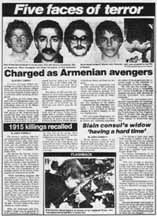
|
|
Boston Herald page from 1982
CLICK ON PIC to read;
(Source: A Myth of Terror)
|
Holdwater: Note that
Armenian terrorism, which is thought of as having come to a halt by the mid-to-late 1980s,
has continued into the 1990s. There were other incidents as well, not always resulting in
murder... such as in the case of March 1995, when the Turkish Ambassador in Ottawa was
seriously injured and his wife and daughter were taken hostage by the JCAG-ARA (Armenian
Revolutionary Army).
So what was the total number of murdered victims?
They vary. The official figures provided by Turkish Foreign Affairs are as follows:
27 diplomats were assassinated 7 diplomat relatives/staff assassinated.
108 Turks wounded + more than 50 wounded in Orly
Based on this information, the most accurate figure
I've been able to come up with is 58
dead, of which 27 were Turkish diplomats.
(TIME Europe, "Debating Genocide," Andrew Finkel,
Jan.30, 2001: "Among the 71 killed were 34 diplomats." The 34 appears to have combined the 27 + 7 relatives/staff. There is a
discrepancy between the 71 and the 58, for the totals.)
|
|
MEHMET BAYDAR
27 January 1973
Los Angeles/USA
 |
|
Mehmet
Baydar
(1924-1973) |
The Armenian assaults against Turkish citizens
started in 1973 when Mehmet Baydar and Bahadir Demir, Turkish Consul General and
Consul in Los Angeles, were murdered by a 78-year-old American Armenian named Gurgen
(Karakin) Yanikian.
Inviting Baydar and Demir to the Baltimore Hotel (for "tea") in Santa
Barbara by declaring that he wished to give a painting of Abdulhamid as a gift to
Turkey, Yanikian shot the two Turkish diplomats dead. He was arrested for murder and
sentenced to life imprisonment, Yanikian was paroled on 31 December 1984 and died
shortly afterwards.
This incident, constituting the first assault against the Turkish diplomats,
launched a chain of murders and became a template for the subsequent attacks by
Armenian terrorists.
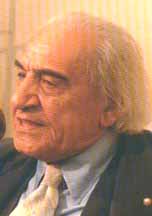 |
|
Kourken Yanikian, as his name
was spelled in an Armenian
site, paying this murderer
"homage" as a hero |
Yanikian, who had carried out
one of the most heinous double-murders in the state's history, was treated as a
"hero" by the crowd of Armenians who had gathered in the courtroom.
Armenian-Americans quickly mobilized and formed a group called "American
Friends of Armenian Martyrs" to raise funds for his defense and to use the
court case as "an educational campaign to bring the story of Turkish genocide
before the American and world attention." (Armenian Mirror-Spectator,
March 24, 1973) Until his death almost a decade later, a few months after he was
released from prison on the order of the then California governor, George Deukmejian,
Yanikian continued to receive gifts and supportive letters from Armenian-Americans.
(Paragraph in yellow
was from "Armenian Atrocities and Terrorism")
--------------------------------------------------------------------------------
BAHADIR DEMIR
27 January 1973
Los Angeles/USA
 |
|
Bahadir
Demir
(1942-1973)
Only 31 years old |
The Armenian assaults against Turkish citizens
started in 1973 when Mehmet Baydar and Bahadir Demir, Turkish Consul General and
Consul in Los Angeles, were murdered by a 78-year-old American Armenian named Gurgen
(Karakin) Yanikian.
Inviting Baydar and Demir to the Baltimore Hotel in Santa Barbara by declaring that
he wished to give a painting of Abdulhamid as a gift to Turkey, Yanikian shot the
two Turkish diplomats dead. He was arrested for murder and sentenced to life
imprisonment, Yanikian was paroled on 31 December 1984 and died shortly afterwards.
The Armenian Reporter
declared on March 8, 1984 that Yanikian had "opened [a] new era of political
struggle" and "changed the course of Armenian history."
This incident, constituting the first assault against the Turkish diplomats,
launched a chain of murders and became a template for the subsequent attacks by
Armenian terrorists.
--------------------------------------------------------------------------------
DANIS TUNALIGIL
Vienna/Austria
22 October 1975
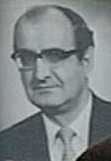 |
|
Danis
Tunaligil |
Turkeys Ambassador to Austria, Danis
Tunaligil, was murdered by three terrorists raiding the Embassy.
When the Turkish Airline Office in Beyrouth was bombed on 20 February 1975, the
letter left in the location by ASALAs Esir Yanikian group that undertook the
attacks responsibility declared that they would fight against the imperialists
for the Armenians rightful case and that the attacks would target Turkey, Iran
and United States and that this case was only a beginning.
On 22 October 1975, three persons bearing automatic weapons forced their way into
the Turkish Embassy in Vienna, neutralised the guards and entered the Ambassadors
office. Receiving an affirmative reply to their question in Turkish to Danis
Tunaligil if he were the Ambassador, they shot him with automatic weapons. Tunaligil
died on the spot and the murderers rapidly left the premises and fled in an
automobile.
WIDOW
SAYS IT WOULD BE WRONG TO IDENTIFY ARMENIANS WITH TERRORISTS; SHE SAYS
ARMENIANS AND TURKS ARE FRIENDS.
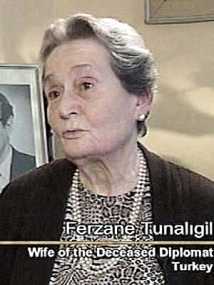 |
|
Ferzane Tunaligil |
"I have Armenian friends as well
here; they all lower their heads in front of me. That's because they're
guilty.* It's not something they want. They're sad, and they're grieving. In
fact, this ASALA is making a mistake. They're harming their own country; not
especially us. They're so in discord, they don't want us to get along, to be
friends. This means they're not real Armenians. I believe so. I don't feel
hatred against Armenians. That was another group. For me, Armenians are
different. ASALA is different. ASALA is something else."
* I would guess this was
mistranslated; her Armenian friends are not guilty of anything. She hopefully
said that they "feel" guilty.
IN
CONTRAST:
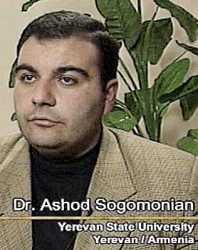 |
|
Dr. Ashod Sogomonian,
Yerevean U. |
"If somebody shot my brother and
killed him, I wouldn't even go to court. I wouldn't tell anyone. If I had a
gun in my hand, I would immediately kill the murderer."
In defense of the
professor, of course, he is talking about personal vengeance against a
specific perpetrator, and not against a whole group. Unfortunately, too many
Armenians have been conditioned to take this concept a step further, and to
target representatives of that group... which is what the point of this page
is about. From an early age, Armenians are taught to be victimized by Turks,
and "Vengeance" can be a particularly unhealthy driving force, on
both ends.
(From the documentary, "Sari
Gelin")
LESSON FROM BATMAN
Many can identify with the rage felt against those who have taken away
loved ones. Why, this was the driving force of how "Batman"
came to be, when as a young boy, Bruce Wayne witnessed the senseless
gunning down of his beloved parents. The philosophy of
"justice" is explored in the 2005 film, "BATMAN
BEGINS," shortly before Bruce Wayne became the famed superhero;
here, his childhood friend, Rachel, discovers that Bruce was planning to
assassinate the murderer of his parents:
Bruce Wayne: "My parents deserved
justice."
Rachel: "You're not talking about justice. You're talking
about revenge."
Bruce Wayne: "Sometimes they're the same."
Rachel: "No, they're never the same, Bruce. Justice is about harmony, and
revenge is about you making yourself feel better. That's why we have an impartial
system."
Bruce Wayne: "Oh, your system is broken." (INSERT FOOTAGE FROM CHARLES
BRONSON'S "DEATH WISH," OR ANY VIGILANTE MOVIE, HERE! However,
later gaining wisdom, Bruce Wayne refuses to become an executioner,
understanding compassion is what separates him from the criminals.
Otherwise, anarchy would reign.)
The curious thing is, the Dashnaks' special "Nemesis" assassination organization, administered by Armen Garo,
knocked off Ottoman principals in the aftermath of WWI, even those like
Prime Minister Said Halim Pasha, whom the British themselves could not
convict at their "Nuremberg" of the Malta Tribunal. So if
"justice" was meted out by these fanatical Armenians from the
past, why have fanatical Armenians from more contemporary times picked
up their pistols? And since the pen is mightier than the sword, why are
fanatical Armenians obsessed with this "justice" still
committing "Rufmord" in the form of their
hateful and slanderous propaganda, today? We can only hope vengeance
does not lie at the core of the "first Christian" Armenian
nation.
|
|
------------------------------------------------------------------------
ISMAIL EREZ
Paris/France
24 October 1975
 |
|
Ismail
Erez |
Turkeys Paris Ambassador Ismail Erez and his
driver Talip Yener were murdered in the vicinity of the Embassy. The Ambassadors
car was ambushed at around 13.30 hours at the Bir Hakeim Bridge on Seine River and
Ismail Erez and his driver Talip Yener were murdered by automatic weapon fire. The
attack was owned up to by an organisation that called itself the Armenian Genocide
Justice Commandos. (According to Erich Feigl, disputed by ASALA.)
--------------------------------------------------------------------------------
TALIP YENER
Paris/France
24 October 1975
 |
|
Talip
Yener |
Turkeys Parisian Ambassador Ismail Erez and
his driver Talip Yener were murdered in the vicinity of the Embassy. The Ambassadors
car was ambushed at around 13.30 hours at the Bir Hakeim Bridge on Seine River and
Ismail Erez and his driver Talip Yener were murdered by automatic weapon fire. The
attack was owned by an organisation that called itself the Armenian
Genocide Justice Commandos.
--------------------------------------------------------------------------------
OKTAR CIRIT
Beirut/Lebanon
16 February 1976
 |
|
Oktar
Cirit |
Turkeys Beyrouth Embassy First Secretary
Oktar Cirit became the victim of Armenian terrorism while sitting at a hall. (Feigl:
"in a restaurant on Hamra Street.") The attack was owned by the ASALA,
which made its name known for the first time.
--------------------------------------------------------------------------------
TAHA CARIM
Rome/Italy
9 June 1977
 |
|
Taha
Carim |
Turkeys Vatican Ambassador Taha Carim was
killed by the cross fire of two terrorists in front of the Embassys residence.
The attack was owned this time by the Armenian Genocide Justice Commandos
organisation.
--------------------------------------------------------------------------------
NECLA KUNERALP
Madrid/Spain
2 June 1978
 |
|
Necla
Kuneralp |
Three terrorists opened fire on the car of
Turkeys Madrid Ambassador Zeki Kuneralp whose wife Necla Kuneralp and retired
Ambassador Besir Balcioglu lost their lives in this attack owned by the organisation
that called itself the Armenian Genocide Justice Commandos organisation. For the
first time in this incident, a foreigner had lost his life in an attack directed
against Turks. That was the Ambassadors driver Antonio Torres.
--------------------------------------------------------------------------------
BESIR BALCIOGLU
Madrid/Spain
2 June 1978
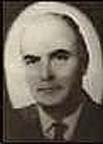 |
|
Besir
Balcioglu |
Three terrorists opened fire on the car of
Turkeys Madrid Ambassador Zeki Kuneralp whose wife Necla Kuneralp and retired
Ambassador Besir Balcioglu lost their lives in this attack owned by the organisation
that called itself the Armenian Genocide Justice Commandos organisation. For the
first time in this incident, a foreigner had lost his life in an attack directed
against Turks. That was the Ambassadors driver Antonio Torres.
--------------------------------------------------------------------------------
AHMET BENLER
The Hague/Netherlands
12 October 1979
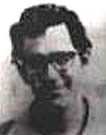 |
|
Ahmet
Benler |
Ahmet Benler, son of Turkeys ambassador to
The Hague, Özdemir Benler, was killed in an armed attack, on the street. (Feigl:
Ten people look on as the terrorists slaughter the 27-year-old medical student and
run away.) Responsibility was claimed separately by ASALA and by JCAG, the
Armenian Genocide Justice Commandos organisation.
--------------------------------------------------------------------------------
YILMAZ COLPAN
Paris/France
22 December 1979
 |
|
Yilmaz
Colpan |
Turkeys Paris Tourism Counselor Yilmaz
Colpan was murdered (while walking on the Champs Elysees) by a terrorist. This case
was the second attack in Paris through Armenian terrorism. A person calling the news
agencies thereafter said that the Armenian Genocide Justice Commandos was
responsible for the assaults in Rome, Madrid and Paris and added that it was killing
the Turkish diplomats because Turkey did not grant the rights of Armenians. (Feigl:
"Several groups, including ASALA, JCAG and the 'Commandos of Armenian Militants
Against Genocide' wrestle over responsibility.")
--------------------------------------------------------------------------------
GALIP ÖZMEN
Athens/Greece
31 July 1980
 |
|
Gali
Ozmen |
Turkeys Athens Embassy Administrative
Attaché Galip Özmen and his 14-year-old daughter Neslihan Özmen were killed in an
armed attack by a terrorist while his wife Sevil Özmen and 16-year-old son Kaan
Özmen survived though seriously wounded. The attack was claimed by the
ASALA.
According to Basar Cem's "The
Terror Dossier and Greece" (1993), One of the results of the Greek
government's protection of terrorism targeting Turks was the assassination of Galip
Ozmen, the Attache of the Turkish Embassy in Athens, and his daughter by the
Armenian terrorists in 1980. The Turkish Foreign Ministry had learned that a Turkish
diplomat in Athens would be assassinated, and asked the Greek Foreign Ministry to
keep the Turkish diplomats under protection. However, the Greek Foreign Ministry did
not take it seriously or did not want to take it seriously. Two months later Galip
Ozmen and his daughter were killed.
In my interview with the Director of the Greek General Diractorate of Press and
Information two months after the incident, he had said to me that, "We have
received the information that assassination would be committed, but I do not
understand why the warning was not taken seriously..."
In a declaration prepared by the ASALA, which was being distributed in Athens a
month before the assassination, it was being said that:
"We will continue our actions against the Turkish diplomats in every country
until Turkiye accepts its crime in the Armenian genocide and declares this to the
world."
That declaration appeared in the Greek press with the headlines "The Armenians
will shoot the Turks in Athens".
According to the book, ASALA terrorist Vadeh
Khodaverdjian bombed the Athens bureau of Kuwait Airlines in 1982, and was sentenced
to 14 years and one month. However the Supreme Court of Appeal in Athens reduced his
punishment to 3 years and 4 months on September 29, 1987, and he was released.
"The Greek Public Prosecutor, instead of interrogating the Armenian terrorist,
who endangered the security of the citizens of Greece, presented Vadeh Khodaverdjian
to the court as a warrior struggling for his ideals and overtly defended the
terrorist."
--------------------------------------------------------------------------------
NESLIHAN ÖZMEN
Athens/Greece
31 July 1980
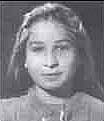 |
|
Neslihan
Ozmen |
Turkeys Athens Embassy Administrative
Attaché Galip Özmen and his 14-year-old daughter Neslihan Özmen were killed in an
armed attack by a terrorist while his wife Sevil Özmen and son Kaan Özmen survived
though seriously wounded. The attack was claimed by the ASALA.
--------------------------------------------------------------------------------
SARIK ARIYAK
Sydney/Australia
17 December 1980
 |
|
Sarik
Ariyak |
Turkeys Sydney Consul General Sarik Ariyak
and his security guard Engin Sever became the victims of Armenian terrorism.
Aside from this case,
- Dogan Türkmen, Turkeys Ambassador to Switzerland, came out alive from
the attack on 6 February 1980 in Bern,
- Fire was opened on 17 April 1980 on the official car of Turkeys Vatican
Ambassador Vecdi Türel. Both Türel and his security guard Tahsin Güvenc
were wounded in this attack, and
- Selcuk Bakkalbasi, the Press Attaché of Turkish Embassy in Paris, was
wounded in an armed attack on 26 September 1980.
--------------------------------------------------------------------------------
ENGIN SEVER
Sydney/Australia
17 December 1980
 |
|
Engin
Sever |
Turkeys Sydney Consul General Sarik Ariyak
and his security guard Engin Sever became the victims of Armenian terrorism.
--------------------------------------------------------------------------------
RESAT MORALI
Paris/France
4 March 1981
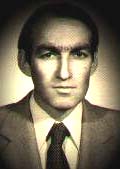 |
|
Resat Morali
(1943-1981) |
Resat Morali and Tecelli Ari, Counsellors of
Labour and Religious Affairs at the Turkish Embassy in Paris were attacked by two
terrorists when they were taking their car in front of the Labour Attachés
office. Morali was killed on the spot while the Religious Affairs Attaché Ari
succumbed to death at the hospital where he was rushed with serious wounds. The
attack was owned by ASALA in this third murderous attack of Armenian terrorism;
Turkey protested to France for not properly protecting the Turkish diplomats. (Feigl:
Ilkay Karakoc, the Paris representative of Anadolu Bank, was also targeted. "Morali
and Karakoc try to flee the scene and make it safely to a cafe, but the owner throws
them back out onto the street. Karakoc still manages to escape. Morali is murdered
in front of the cafe. Ari, who was the first one targeted, dies a short time later.
There are countless witnesses, but no one can 'remember' what the murderers looked
like. The Shahan Natali Group of ASALA claims responsibility.")
--------------------------------------------------------------------------------
TECELLI ARI
Paris/France
4 March 1981
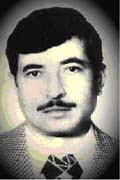 |
|
Tecelli Ari
(1946-1981) |
Resat Morali and Tecelli Ari, Counsellors of
Labour and Religious Affairs at the Turkish Embassy in Paris were attacked by two
terrorists when they were taking their car in front of the Labour Attachés
office. Morali was killed on the spot while the Religious Affairs Attaché Ari
succumbed to death at the hospital where he was rushed with serious wounds. The
attack was owned by ASALA in this third murderous attack of the Armenian terrorism
and Turkey gave a protest note to France for not properly protecting the Turkish
diplomats. (See above for more details.)
--------------------------------------------------------------------------------
M. SAVAS YERGÜZ
Geneva/Switzerland
9 June 1981
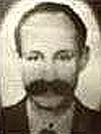 |
|
M. Savas Yerguz |
Mehmet Savas Yergüz, Secretary of the
Turkish Consul General in Geneva, lost his life in an armed attack shortly after
leaving the office for going home. The attack was owned by the ASALA. Mardiros (Madiros?)
Camgozian (Jamgotchian), the Lebanese Armenian terrorist arrested after the attack,
received a 15-year imprisonment sentence; he serves only 10 years. In a communiqué
in Beirut, ASALA vows to "destroy Swiss interests throughout the world unless
Jamgotchian is freed." ASALA then forms a new branch, called the "Ninth of
June Organization," which undertakes a series of 12 attacks against Swiss
targets worldwide. Though ASALA claims responsibility, few arrests are made.
--------------------------------------------------------------------------------
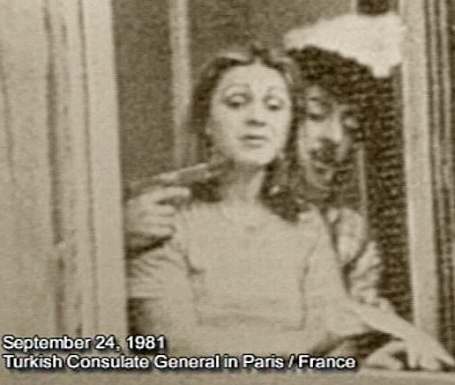
Woman held hostage by Armenian terrorists in
Paris' Turkish embassy, Sept. 24, 1981
CEMAL ÖZEN
Paris/France
24 September 1981
 |
|
Cemal Ozen |
Four Armenian terrorists occupying the premises
housing the Turkish Consulate General and the office of the Cultural Attaché took
hostage 56 Turkish officials and citizens, and killed security guard Cemal Özen who
attempted to attack and wounded Consul General Kaya Inal. The terrorists wanted
Turkey to release 12 political detainees and to send them to Paris. As they realised
that this demand would not be complied with, they surrendered to the police some 15
hours after. Turkey warned France once more; the attack was claimed by ASALA. Four
Lebanese-Armenian terrorists named Vasken Sakoseslian, Kevork Abraham Gozlian (Guzelian),
Aram Avedis Basmacian and Agop Abraham Turfanian, received 7-year imprisonment
sentences. (Guzelian, if not the others, got out in the summer
of 1986, serving even less than his "slap-on-the-wrist" sentence.)
The court verdict was protested in Turkey. These arrests, prosecutions and
convictions, lead to the formation of the ASALA "September 24 Suicide
Commandos" (a.k.a the "September France Group") which subsequently
would strike at French targets in order to force the release of the four ASALA
gunmen.
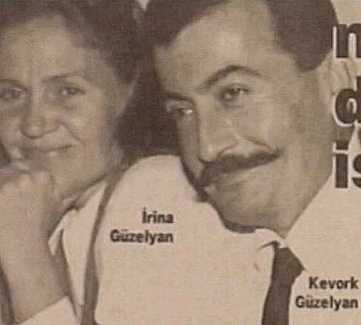
Kevork Guzelian; French slap-on-the-wrist,
followed by release
Aside from this case, in 1981,
- Turkeys Copenhagen Labour Attaché Cavit Demir came out with small arm wounds
on 2 April in the lift of the apartment house where he lived, and
- Turkeys Rome Embassy Second Secretary Gökberk Ergenekon survived with minor
wounds an attack that was directed against him on 25 October on a street.
--------------------------------------------------------------------------------
KEMAL ARIKAN
Los Angeles/USA
28 January 1982
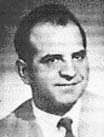 |
|
Kemal Arikan
(1927-1982) |
Turkeys Los Angeles Consul General Kemal
Arikan was killed by the Tashnak militant Hampig Sassounian, who was sentenced to
life imprisonment. Sassounian's father states on public television, "I am glad
that a Turk was killed, but my son did not do it." A previous attempt on Arikan
was made with the firebombing of his home on Oct. 6, 1980.
The killers claiming responsibility were the
Justice Commandos of the Armenian Genocide (JCAG)after July 1983 called the
Armenian Revolutionary Army (ARA). Unlike rival ASALA, this group attacked only
Turkish targets.
A campaign to provide funds for Sassounian's defense raised
$250,000 in small donations from Armenian-Americans throughout the United States.
(Michael M. Gunter, "Pursuing the
Just Cause of Their People": A Study of Contemporary Armenian Terrorism, p.
74.)
After Hampig Sassounian was found guilty
of murdering the Turkish Consul in Los Angeles in 1982 . . . Bishop Yeprem Tabakian,
the prelate of the Western Prelacy of the Armenian Apostolic Church, stated: "Hampig's
conviction is an indictment directed against all Armenians." Archbishop
Vatche Hovsepian, the primate of the Western Diocese of the Armenian Church, added:
"I am truly shocked about the verdict." George Mason, the moderate
publisher of The [Armenian] California Courier, concluded:
"There are many Armenian Americans in California who feel great sympathy and
support for Armenian terrorists. I have talked to numerous peaceful, fair, and
thoughtful men who have expressed support for the terrorists."
--------------------------------------------------------------------------------
ORHAN GÜNDÜZ
Boston/USA
5 May 1982
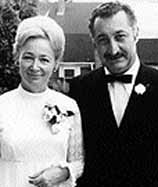 |
|
Orhan Gunduz (and wife?) |
Turkeys Boston Honorary Consul General Orhan
Gündüz was killed in an armed attack. The Boston Herald
article by James Connolly above wrote the diplomat was ambushed
on May 4 (and not May 5), in Somerville, Massachusetts, and the Dashnaks' JCAG
claimed responsibility. (There is a picture of wife, Meral Gunduz, in the account.)
Feigl tells us Gunduz was given an ultimatum by
terrorists to give up his title of honorary consul, but refused. "An eyewitness
who gave a description of the murderer is shot down. He survives but falls silent. A
357 magnum, a nine-mm handgun, and a jogging jacket used by the assailant are all
left at the scene of the crime. Television stations and newspapers join the manhunt.
When the eyewitness is shot down, all help from the public dries up. Gunduz's
murderer is never caught."
President Reagan got
the Feds involved in an all-out manhunt, trying to apprehend the criminals.
Gunduz's murder cut short the life of a school he was co-founder of. The Orhan
Gündüz Memorial School got going again
in 1994, staffed by volunteers.
--------------------------------------------------------------------------------
ERKUT AKBAY
Lisbon/Portuga
7 June 1982
 |
|
Ekrut
Akbay |
Turkeys Lisbon Embassy Administative
Attaché Erkut Akbay died as a result of an armed attack on his car. His wife Nadide
Akbay succumbed later to death at the hospital where she was brought with corporeal
wounds. (Feigl: "JCAG claims responsibility.")
--------------------------------------------------------------------------------
NADIDE AKBAY
Lisbon/Portuga
7 June 1982
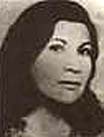 |
|
Nadide
Akbay |
Turkeys Lisbon Embassy Administative
Attaché Erkut Akbay died as a result of an armed attack on his car. His wife Nadide
Akbay succumbed later to death at the hospital where she was brought with corporeal
wounds.
--------------------------------------------------------------------------------
A NON-"DIPLOMAT"
TERROR ATTACK (and first attack within Turkey)
August 7, 1982 Ankara, Esenboga Airport Two
ASALA terrorists open fire in a crowded passenger waiting room. One of the
terrorists takes more than 20 hostages while the second is apprehended by police.
The killers leave nine people dead and 82 [The number was 72]
injured. The surviving terrorist, Levon Ekmekjian, realizes the horror of his crime
before the execution. He issues a strong appeal to his young comrades to reject the
program of murder. (Erich Feigl, A Myth of Terror)
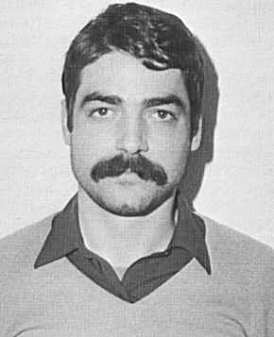 |
|
Levon
Ekmekjian: had a change of heart |
The hatred is venomous, relentless and
overwhelming. When Armenian Terrorist Levon Ekmekjian was told by Turkish police
that his two-man murder squad had succeeded in killing nine people and wounding 72
others, he cried out furiously, "It wasn't enough!"
The terrorists had exploded a bomb in the middle of the crowded check-in area at
Ankara's Esenboga Airport on Aug. 7, then opened fire with submachine guns on
passport-control officers and passengers, mostly Turkish workers returning to jobs
in West Germany and The Netherlands after a holiday. One of the gunmen was reported
to have yelled at his victims as he fired, "More than a million of us died!
What's the difference if 25 of you die?"
(TIME Magazine, "A Cry for Bloody Vengeance," Aug. 23, 1982)
Holdwater: Actually, the
Turks who died at the time of the supposed "more than a million" Armenians
wasn't 25, but 100,000 times that. Perhaps a fifth of that number, 500,000, was at
the hands of Armenians.
--------------------------------------------------------------------------------
ATILLA ALKIKAT
Ottawa/Canada
27 August 1982
 |
|
Atilla
Alkikat |
 |
|
Atilla
Alkikat; shot in the neck with a
9mm pistol |
Atilla Alkikat, the Military Attaché at the
Turkish Embassy in Ottawa, was killed in an armed assault.
--------------------------------------------------------------------------------
BORA SÜELKAN
Burgos/Bulgaria
9 September 1982
 |
|
Bora
Suelkan |
Bora Süelkan, Administrative Attaché of the
Turkish Consulate General in Bourgos, was killed by a terrorist attack. (Feigl:
"...assassinated in front of his home. The assassin leaves the message,
"We shot dead the Turkish diplomat: Combat Unions of Justice Against the
Armenian Genocide." An anonymous caller claims the assassination is the work of
a branch of the ASALA headquarters in Beirut.")
Aside from this case, in 1982,
- Kemal Demirer, Rotterdam Consul General of Turkey, was wounded in an attack
in front of his residence on 21 July. He came out of this attack with minor wounds
and the attacker was arrested while trying to get away.
- Kani Güngör, Commercial Attaché in
the Ottawa Embassy of Turkey, was wounded in an attack on 8 April. (According to the article below, Mr. Gungor was left paralyzed.)
"New book on terror," March 8, 2004, National Post (Canada),
by Mary Vallis:
An Armenian immigrant who participated in Canada's first major
terrorist incident 22 years ago lives in Toronto and plays guitar in
a band, according to a new book probing the country's terrorist ties.
Cold Terror: How Canada Nurtures and Exports Terrorism Around the World
explores how Canada has evolved into an internationally renowned hub of global
terrorism. Written by National Post reporter Stewart Bell, the book contains
exclusive interviews with victims of terrorist attacks, senior intelligence
officials and terrorists themselves.
In September, 2003, at a nondescript coffee shop in Toronto's Little Italy, Mr. Bell
met with Haig Gharakhanian, one of three Armenians convicted of plotting to kill a
Turkish diplomat in Ottawa. The man was nervous because his band's CD was about to
be released, and he had just met with CSIS to get clearance for his Canadian
citizenship, but spoke with Mr. Bell anyway.
"As we were speaking, the lead singer of his band comes in and sits down,"
Mr. Bell recalled. "You could just see this guy's eyes widening as he listens
to the guy who's been his guitar player and roommate for years explaining his
involvement in terrorism."
Mr. Gharakhanian, who was just 17 years old when he participated in the attack,
spent nine months in prison for his role in the 1982 shooting of Kani Gungor. The
diplomat was left paralyzed. Mr. Gharakhanian, who had Iranian citizenship, helped
scout out the target and delivered a letter to the United Press International's Los
Angeles office in which the Armenian Secret Army for the Liberation of Armenia (ASALA)
claimed responsibility for the attack.
After he was released on parole, Mr. Gharakhanian applied for refugee status and
successfully fought a deportation order. Mr. Bell uses his case as one example that
illustrates how Canada's generous immigration policy has fuelled the country's links
to terrorism.
"He got a very light sentence. He was not deported because the
immigration judges felt sorry for him, and now he's about to become a citizen,"
Mr. Bell said of Mr. Gharakhanian. "That was our beginning. We treated a guy
who was basically a terrorist sympathetically, and that set the stage for everything
that's followed... We still see examples of that every day."
--------------------------------------------------------------------------------
GALIP BALKAR
Belgrade/Yugoslavia
9 March 1983
 |
|
Galip
Balkar |
An armed assault was made against Turkeys
Belgrade Ambassador Galip Balkar on 9 March 1983 by two terrorists. Mortally wounded
in this attack, Balkar died on 11 March. A Yugoslavian student also lost his life in
this incident. Terrorists Kirkor Levonian and Raffi Alexander were sentenced to 20
years of imprisonment on 9 March 1984, exactly one year after the
incident. (Feigl: "Balkar['s]... driver, Necati Kayar, is shot in the stomach.
As the two assailants flee from the scene, they are bravely pursued by Yugoslav
citizens. One of the terrorists shoots and wounds a Yugoslav colonel and is in turn
apprehended by police. The second terrorist opens fire on civilians who are chasing
him, killing a young student. The two terrorists, Kirkor Levonian and Raffi Elbekian,
are tried and sentenced.")
--------------------------------------------------------------------------------
DURSUN AKSOY
Brussels/Belgium
14 July 1983
 |
|
Dursun
Aksoy |
A
Turkeys Brussels Embassy Administrative
Attaché Dursun Aksoy was murdered by Armenian terrorists. [Feigl: Three groups
compete for the "honor" of having organized the death squad: ASALA, JCAG
and the Armenian Revolutionary Army (ARA).]
--------------------------------------------------------------------------------
CAHIDE MIHCIOGLU
Lisbon/Portugal
27 July 1983
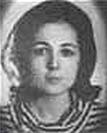 |
|
Cahide
Mihcioglu |
The Lisbon Embassy of Turkey was occupied and
those within the building were taken hostage by five Armenian terrorists. Cahide
Mihcioglu, wife of Embassy Counsellor Yurtsev Mihcioglu, was killed during this
incident. The Portuguese police saved the hostages by an operation and killed all
five terrorists. The attack was claimed by an organisation that called itself the
Armenian Revolutionary Army, which threatened with death the Portuguese Prime
Minister Mario Soarez, because of the death of the terrorists.(Feigl: "Five
Armenian terrorists ... occupy the residence, taking Deputy Chief of Mission Yurtsev
Mihcioglu, his wife and family hostage. When explosives go off, Cahide Mihcioglu,
wife of the deputy chief of mission, and four of the terrorists are blown to pieces.
Yurtsev Mihciolgu and his son, Atasay, are injured. The fifth terrorist is killed by
security forces, while one Portuguese policeman dies in the clash. ARA claims
responsibility.")
--------------
Aside from this case, in 1983,
On 16 June, a terrorist opened fire on the people at the Grand Bazaar in Istanbul.
Two persons were killed and twenty-one were wounded in this attack of which the
author was killed on the spot. It was later ascertained that he was an Armenian.
A bomb exploded in front of the Turkish Airlines office in Paris-Orly Airport. Two
Turks, four Frenchmen, one American and one Swede died and sixty-three persons, of
whom twenty-eight were Turks were wounded in this attack, named later as the "Orly
massacre".
--------------------------------------------------------------------------------
ISIK YÖNDER
Teheran/Iran
28 April 1984
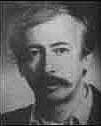 |
|
Isik
Yonder |
Isik Yönder, husband of Turkeys Teheran
Embassy Secretary Sadiye Yönder, who was a businessman doing trade with Iran, was
killed by an ASALA militant. (Feigl: "Two Armenian terrorists riding a
motorcycle open fire on Isik Yonder as he drives his wife, Sadiye Yonder, to the
Turkish Embassy where she works. Isik Yonder is killed. ASALA claims
responsibility.")
--------------------------------------------------------------------------------
ERDOGAN ÖZEN
Vienna/Austria
June 20, 1984
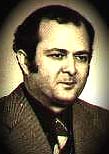 |
|
Erdogan
Ozen
(1934-1984) |
Turkeys Vienna Embassy Labour Attaché
Erdogan Özen was killed as a result of the explosion of a bomb planted in his car.
This incident was claimed by the Armenian Revolutionary Army. (Five others were
seriously wounded, including a policeman. Picture of mourning family below.)
ADDENDUM, 9-08: Mr.
Ozen's murder is what led Erich Feigl to write "A Myth of Terror";
Feigl;s words on his friend (p. 6):
He had been an enthusiastic dedicated worker. His job had
been to help Turkish workers in Austria and to take care of
their problems. He had carried out those duties expertly and
conscientiously. But there was more: I often heard him talk in
those days of his eleven or twelve year old son, Murad. I saw
the love in his eyes that tied him to his child and to his wife,
Monika.
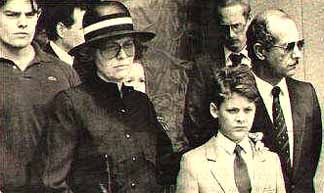
Ozen's
wife, Monika, mourns with son Murat (A Myth of Terror)
Erdogan Ozen was born long after the end of the First World War
and had absolutely nothing to do with the tragic events of 1915,
which cost so many Armenian and Moslems their lives.
Moreover, I can say with absolute certainty, based on my
friendship to him and everything I know about him: had Erdogan
Ozen lived in those days and come into contact with needy or
persecuted Armenians, he would have helped them.
In the same instant that I heard of the news of Erdogan's death,
I decided to do something, something within the realm of my
capabilities. After researching the subject thoroughly and
meeting with a tremendous number of people, I made a series of
films about this "myth of terror", and I wrote this
book. The book, at least the large portion consisting of
illustrations, grew out of the film work. The subject of the
book is indeed a "myth"... in the true sense of the
word. It is something from the realm of fiction and imagination,
something that has been "made into a legend".
At the same time though, it is something absolutely alive and
potent, as we can see from the acts of terrorism and their
horrible consequences.
--------------------------------------------------------------------------------
ENVER ERGUN
Vienna/Austria
19 November 1984
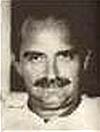 |
|
Enver
Ergun |
Enver Ergün, an official at the UN
Representation of Turkey, was killed as a result of the explosion of a bomb planted
in his car. (Feigl: while driving to work.) This incident too was claimed by the
Armenian Revolutionary Army.
---------------------
A terrorist trying to plant a bomb on the car of Isil Ünel, Turkeys Teheran
Embassy Deputy Commercial Attaché, was blown to pieces as the bomb exploded in his
hands on 28 March 1984.
The next day, Hasan Servet Öktem and Ismail Pamukcu, First Secretary and Deputy
Attaché of the Turkish Embassy in Teheran, were wounded in an armed assault in
front of their houses.
--------------------------------------------------------
IN ADDITION:
As reported by Erich Feigl, "A Myth of Terror":
Armenian terrorism appeared to slow down in the
late 1980s, but attacks on Turkish diplomats did not come to an end:
October 7, 1991 Athens Gunmen fire four shots and kill Cetin Gorgu, press attache at
the Turkish Embassy, in the Athens suburb of Pangrati. The attackers flee on foot.
The Greek nationalist ultraleftist November 17 organization claims responsibility
and says the murder was due to Turkey's presence in Cyprus.
December 11, 1993 Baghdad The administrative attache at the Turkish Embassy, Caglar
Yucel, is assassinated while travelling in his car. Another attache, Huseyin
Kerimoglu, also in the car, is slightly wounded. Iranian opposition movement
Mujaheedeen Khalq claims responsibility, but says that Yucel was killed in a case of
mistaken identity.
July 4, 1994 Athens Greek terrorists pump six bullets into Haluk Sipahioglu, the
counselor at the Turkish Embassy in Athens. Sipahioglu initially survives but dies
in hospital several hours later. The assassins escape in heavy traffic. November 17
claims responsibility again. Ankara criticizes Athens for lax security measures. A
few months before the murder, the ultranationalist newspaper, Strohos, has published
the names, addresses and telephone numbers of all Turkish Embassy staff, portraying
them as targets.
--------------
The first act of November
17 was the assassination of Richard Welch in 1975. Since 1975, the organisation has
carried out more than seventy armed actions against Greek, American, and Turkish
citizens. Cumhuriyet reported on 9-12-03 that three suspects (Savas Ksiros,
Dimitris Kufodinas and Vasilis Corcatos) were also accused of killing Cetin Gorgu
and Haluk Sipahioglu, and for attempting to assassinate in 1991 an undersecretary
named Deniz Bolukbasi. "Most of the suspects are expected to be sentenced to be
life in prison."
The Washington Post published an
article beginning with what's below, called "In Istanbul, a Crack In the
Wall of Denial," September 25, 2005, by Elif Shafak (alluding to the
Armenian "genocide" conference planned to be held in Turkey, by
genocide club members.)
I am the daughter of a Turkish diplomat a rather unusual
character in the male-dominated foreign service in that she was a single
mother. Her first appointment was to Spain, and we moved to Madrid in the
early 1980s. In those days, the Armenian Secret Army for the Liberation of
Armenia, known as ASALA, was staging attacks on Turkish citizens and
diplomats in particular in Rome, London, Zurich, Brussels, Milan and
Madrid; our cultural attaché in Paris was assassinated in 1979 while walking
on the Champs-Elysees. So throughout my childhood, the word
"Armenian" meant only one thing to me: a terrorist who wanted to
kill my mother.
Faced with hatred, I hated back. But that was as far as my feelings went. It
took me years to ask the simple question: Why did the Armenians hate us?
(The cultural attaché was Yilmaz Colpan;
Shafak was eight years old at the time.)
The rest of the article lends insight on
how Ms. Shafak, especially with a trip to the USA in 2002, began to believe
some 1.5 million Armenians were killed; she spoke to Armenian grandmothers,
and absorbed claims by the Zoryan Institute. She realized atrocities had been
committed upon Armenians (as if that were ever a hidden fact; what's not
generally known are the atrocities committed upon the Turks), sounds mortified
that Turkey "rejects the charge that Armenians were purposely
exterminated," and seems even more aghast that "some even go
so far as to claim that it was Armenians who killed Turks." This
diplomat's daughter appears to have done an excellent job of following in
Taner Akcam's footsteps. She got a job as a "visiting professor" at
the University of Michigan (where Akcam got started), and moved up in 2004,
finding work at the University of Arizona, as a professor of Turkish Studies.
(Where she can teach unsuspecting students her version of Turkish history.
Grand!) In 2004, the doors opened to get two of her novels published in the
USA (even though her English is not quite up to par), and the opportunist is
currently a popular speaker on the Armenian "genocide" circuit,
coming off a UCLA round in late 2005 with Akcam and Gocek (with Hovannisian at
the helm) and is currently scheduled to speak on April 24, 2006 at the Univ.
of Minnesota, facilitated by the CHGS's
Stephen Feinstein. We know thar's gold in them thar Armenian Genocide
hills, but this is actually coming from the daughter of a diplomat. When
the terrorist cried that he didn't kill enough Turks in
1982's Ankara airport attack, let's hope Dr. Shafak won't today get too
teary-eyed in agreement.
|
ADDENDUM:
The following is
provided as a supplement to the above descriptions of terror attacks.
Turkish Diplomats Killed by Armenian Terrorists
Below are 27 attacks against Turkish diplomats by Armenian terrorists
during 1980s. These events have been divided into four categories:
The first are instances in which a Turkish diplomat was killed and the
perpetrators were arrested, tried and convicted.
The second category describes instances in which convictions were
secured against perpetrators of attempted murders of Turkish
diplomats. Under American jurisprudence, the degree of culpability
between one who attempts a murder and one who succeeds is identical.
Thus, from a legal, if not rhetorical, standpoint this category and
the first are of equal impact.
The third category, instances in which a Turkish diplomat was killed,
but the perpetrator[s] escaped is of near equal relevance to the first
two categories because in each such case Armenian terrorists claimed
responsibility. In the strictest sense, there is no need for a
conviction when there is a confession.
The fourth category describes attempted killings of Turkish diplomats
in which the perpetrator[s] escaped. These are also important because
Armenian terrorists claimed responsibility.
Category 1: Turkish Diplomat Killed, Perpetrator[s] Arrested, Tried, and
Convicted
1. January 27, 1973 - Santa Barbara, California, United States:
Gourgen Yanikian, an elderly U.S. citizen of Armenian origin,
assassinates Los Angeles Turkish Consul General, Mehmet Baydar, and
Vice Consul, Bahadir Demir, after inviting the Turkish diplomats to
his hotel suite to present the Turkish Government with a "gift." Soon
after killing the diplomats, Yanikian surrenders to police, is tried
in the Superior Court of the State of California for the County of
Santa Barbara, is convicted of first-degree murder, and sentenced to
life imprisonment. Ten years later, California Governor George
Deukmejian, who is of Armenian descent, orders the release of
Yanikian, who dies of natural causes soon thereafter. The Armenian
Reporter, commemorates Yanikian, declaring that he had "opened [a] new
era of political struggle" and "changed the course of Armenian
history."
2. March 12, 1981 - Teheran, Iran: An Armenian gunman kills two
security officers in a failed attempt to take over the Turkish
Embassy. The gunman, Yeghia Keshishian, is apprehended, tried,
convicted, and executed by the Iranian government. ASALA claims
responsibility for the attack.
3. June 9, 1981 - Geneva, Switzerland: An Armenian gunman assassinates
Turkish Consulate Secretary, Mehmet Savas Yerguz, as he is leaving his
office. Swiss authorities apprehend Mardiros Jamgotchian. ASALA claims
responsibility for the assassination. Jamgotchian is convicted of the
murder and sentenced to 15 years, though he serves only 10 years. In a
communiqué in Beirut, ASALA vows to "destroy Swiss interests
throughout the world unless Jamgotchian is freed." ASALA then forms a
new branch, called the "Ninth of June Organization," which undertakes
a series of 12 attacks against Swiss targets worldwide. Though ASALA
claims responsibility, few arrests are made.
4. September 24, 1981 - Paris, France: Four Armenian gunmen seize the
Turkish Consulate, taking 56 people hostage for 16 hours. During the
siege, Armenian gunman Kevork Guzelian shoots and seriously wounds
Consul Kaya Inal and a Turkish security officer, Mr. Cemal Ozen. In a
statement issued in Beirut during the siege, ASALA's "Suicide
Commandos of Yeghia Kechichian" threaten that if Turkey does not
release certain "Armenian political prisoners," and if French
authorities intervene in the Consulate takeover, all of the hostages
will be executed." French negotiators approach the Consulate and then
retreat when gunmen waive a hand grenade from the window. Turkish
negotiators, however, successfully demand that the gunmen permit
Consul Inal and Officer Ozen to be taken to the hospital for medical
treatment. The gunmen eventually comply, but Officer Ozen dies upon
arrival at the hospital. Turkish negotiators reject the gunmen's
demand for the release of certain Armenian terrorists incarcerated in
Turkey. The gunmen then request political asylum in France in return
for surrendering to French law enforcement officers. The gunmen
surrender and admit their membership in ASALA. French authorities deny
the gunmen political asylum and proceed with criminal prosecution. The
French government states, "However sorrowful the historical events that
the perpetrators of this act invo[ked], the takeover was an
inadmissible assault on elementary human rights and becomes even more
intolerable because once again Turkish diplomats assigned to France
have been attacked." Guzelian and his accomplices are given seven-year
sentences. These arrests, prosecutions and convictions, lead to the
formation of the ASALA "September 24 Suicide Commandos" (a.k.a the
"September France Group") which subsequently strikes at French targets
in order to force the release of the four ASALA gunmen.
5. January 28, 1982 - Los Angeles, California, United States: Two
Armenian gunmen assassinate Turkish Consul General, Kemal Arikan, in
his automobile while waiting at an intersection. JCAG claims
responsibility. One of the assassins, Hampig Sassounian, a 19-year-old
Armenian American member of the JCAG, is arrested shortly thereafter.
Sassounian's father states on public television, "I am glad that a
Turk was killed, but my son did not do it." Sassounian's accomplice,
believed to be Krikor Saliba, escapes to Beirut. Los Angeles police
search Sassounian's automobile, seizing a .357 caliber bullet and a
one-way airline ticket from Los Angeles to Beirut. Police also search
Sassounian's home, where they seize a gun receipt, pistol targets, and
a manifesto of "The Armenian Youth Federation." Although Sassounian
pleads not guilty, the Court convicts him of first-degree murder and
sentences to life imprisonment. Sassounian's sentence is later changed
to 25 years-life in an appeal agreement in which he finally confesses
to the killing. On October 6, 1980 a first attempt was made on
Arikan's life, when his home was firebombed.
6. March 9, 1983 - Belgrade, Yugoslavia: Two Armenian gunmen
assassinate the Turkish Ambassador to Yugoslavia, Galip Balkar, and
seriously wound his chauffeur, Necati Kayar, in central Belgrade. One
of the gunmen, Antranig Boghosian (a.k.a. Harutiun Levonian), also
opens fire on and seriously wounds a Yugoslav Colonel, and is then
shot and apprehended by a member of the Yugoslav Secret Service.
Boghossian is paralyzed from his injuries. As the other gunman, Raffi
Elbekian, flees from the scene, Belgrade citizens pursue him. Elbekian
opens fire on the civilians, killing a young male student and wounding
a young girl. JCAG claims responsibility for the assassination.
Boghosian and Elbekian area convicted of murder and sentenced to 20
years. Both were released in 1987, after serving only four years. They
then lived underground in Greece, South Cyprus, and Lebanon until
1995, at which time they entered Armenia. Boghosian lives in Yerevan,
Armenia, and is said to reside with Alec Yenikomshian of ASALA, who
was convicted in Switzerland for the attempted murder of the Turkish
Ambassador.
Category 2: Attempted Killing of Turkish Diplomat, Perpetrator[s]
Arrested, Tried, and Convicted
|
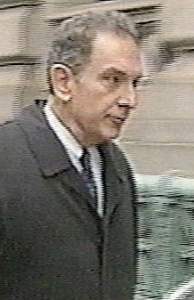
|
|
Mourad
Topalian on way to court
|
7. October 12, 1980 - New York, New York, United States: A bomb
planted under a stolen automobile parked in front of the United
Nations Plaza and Turkish Center, which houses the offices of the
Turkish Ambassador to the U.N. and the Turkish Consul General in New
York, explodes at 4:50 p.m., minutes before hundreds of employees and
tourists exit the United Nations building. The bomb, with the force of
nine sticks of dynamite, demolishes the automobile. Hurled metal,
glass, and flames injure five Americans. The explosion destroys a
vehicle parked across the street, and causes significant damage to the
11-story Turkish Center, and blows out the windows of nearby
buildings, including B'nai B'rith, Chase Manhattan Bank, the African
American Center, a travel agency and numerous apartment complexes.
Assistant New York City Police Chief, Milton Schwartz, expressed "It
is absolutely lucky that more people weren't injured." U.S. Ambassador
to the United Nations, Donald McHenry, condemned the attacks as
"savage and calculated terrorism." New York City Mayor Edward Koch
expressed that the incident "demonstrates forcefully that all
terrorism, no matter what form it takes, and no matter against whom it
is directed, must be condemned and punished." JCAG claims
responsibility. This incident was directed by ANCA Chairman Mourad
Topalian who, 20 years later, was convicted of related weapons and
explosives charges. He served 37 months in federal prison and is now
on supervised release.
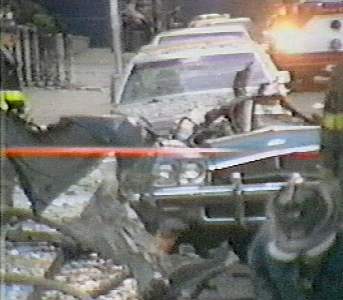
8. April 8, 1982 - Ottawa, Canada: Armenian gunmen open fire on
Turkish Embassy Commercial Attaché, Mr. Kani Gungor, as he enters the
garage of his apartment complex. The following day ASALA issues a
statement, "We warn the Canadian authorities that any attempt to
persecute the Armenian community in Canada will not pass without
punishment." Mr. Gungor is left paralyzed by the shooting. Five
Canadian Armenian ASALA members - Nicholas Moumdjian, Haroutium
Kevork, Haig Balian, Haig Karkhanian, and Melkon Karakhanian - are
arrested. Three are convicted. In 1986, the Canadian Security
Intelligence Review Committee decides to deport!Moumdjian, claiming
that he conspired to assassinate Mr. Kani Gungor, that he had
purchased items that could be used to make a bomb, and that he
believed in the indiscriminate use of violence for political ends.
Moumdjian immediately appealed the 1988 decision of the Security
Committee to the Toronto Federal Court of Appeals. Before the appeal
process is completed, Moumdjian flees Canada, stating that he was
going to Armenia as a part of a "humanitarian mission." It was last
reported that Moumdjian had enrolled as a political science major at
York University.
9. October 22, 1982 - Los Angeles, California, United States: The FBI
arrests and charges four local Armenian Americans for conspiring to
bomb the Philadelphia Honorary Turkish Consul General, Kanat Arbay.
They are JCAG members recruited from the Armenian Youth Federation,
and include: Karnig Sarkissian, 29, of Anaheim; Viken Vasken
Yacoubian, 19 of Glendale; Viken Archavir Sarkissian Hovsepian, 22 of
Santa Monica; and, Dikran Sarkis Berberian, 29, of Glendale. A fifth
co-conspirator, Steven John Dadaian, 20 of Canoga Park, California, is
arrested at Logan International Airport!in Boston, as he exits the
aircraft with a briefcase containing five sticks of dynamite and the
components of a detonation timer transported from Los Angeles. The
five co-conspirators are called the "L.A. Five", which the FBI linked
to over a dozen bombings in southern California between 1980 and 1982
as well as the assassination of Turkish Consul General Kemal Arikan.
Speaking on behalf the Armenian National Committee of America, local
representative Leon Kirakosian "condemned this effort!by the FBI and
local police agencies to do Turkish dirty work against the Armenian
people." All five were convicted of various federal crimes, though
some were given sentences so light that no jail time was served. Two
of the five perpetrators, Hovsepian and Yacoubian, eventually are
granted U.S. citizenship by a federal judge. The U.S. Court of Appeals
for the Ninth Circuit overturned this ruling. Pending the completion
of their last ditch appeals, Hovsepian and Yacoubian will be deported
to Lebanon.
10. March 28, 1984 - Teheran, Iran: Two Armenian gunmen attempt to
assassinate Turkish Embassy Administrative Attaché Ibrahim Ozdemir as
he leaves his home. They are apprehended by Teheran law enforcement
officers responding to a call by Ozdemir, who had been surveying the
gunmen that morning. ASALA claims responsibility. They are tried,
convicted, and given short sentences.
11. September 1, 1984 - Teheran, Iran: Iranian law enforcement
officers foil a plot by ASALA to assassinate the Turkish Ambassador to
Iran, Ismet Birsel. Though the conspirators are arrested, they are
later released without trial.
12. March 12, 1985 - Ottawa, Canada: Three Armenian Canadian gunmen, two Syrian-born
- Kevork Marachelian and Ohannes Noubarian - and one Lebanese-born Rafi Panos
Titizian, storm the Turkish Embassy, killing a Pinkerton security guard in the
entryway to the complex. Turkish
Ambassador Coskun Kirca escapes by leaping from the second floor
window at the back of the embassy, breaking his right arm, right leg
and pelvis. The gunmen then take 12 people hostage, including the
Ambassador's wife, Bilge Coskun, teenage daughter and three children.
Four hours later, the gunmen, who come to be called the "Ottawa Three"
surrender to Pinkerton law enforcement officers. The "Armenian
Revolutionary Army" of the JCAG claims responsibility for the
attempted assassination.
Category 3: Turkish Diplomat Killed, Perpetrator[s] Not Arrested, But
Responsibility Claimed by Armenian Terrorist Organizations
14. October 24, 1975 - Paris, France: An Armenian gunman assassinates
the Turkish Ambassador to France, Ismail Erez, also killing the
Ambassador's chauffeur, Talip Yener. ASALA and JCAG publicly dispute
which group deserves credit for the assassination.
15. June 2, 1978 - Madrid, Spain: Three Armenian gunmen open automatic gunfire on
the automobile of the Turkish Ambassador to Spain, Zeki Kuneralp. The Ambassador's
wife, Necla Kuneralp, and a guest, a
retired Turkish Ambassador, Besir Balcioglu, are killed. Spanish
chauffeur, Antonio Torres, dies later from his wounds. ASALA and JCAG
claim responsibility.
16. July 31, 1980 - Athens, Greece: Armenian gunmen attack Turkish
Embassy Administrative Attaché, Galip Ozmen, and his family as they
wait in their automobile at a traffic light. Mr. Ozmen and his
fourteen-year-old daughter, Neslihan Ozmen, are killed in the rain of
automatic fire. His wife, Sevil Ozmen, and his sixteen-year-old son,
Kaan Ozmen, are seriously wounded but survive. ASALA claims
responsibility.
17. December 17, 1980 - Sydney, Australia: Two Armenian gunmen
assassinate Turkish Consul General, Sarik Ariyak, and his bodyguard,
Engin Sever, as the Turkish officials are walking toward their
vehicle. Ariyak dies instantly and the bodyguard dies on the way to
the hospital. A spokesperson for the Australian Ministry of Foreign
Affairs states, "We deplore this violent and criminal incident and
hope those responsible are brought to justice." A statement by the
U.S. Department of State referred to the killings as "brutal murders"
and added, "The inviolability of diplomatic and consular personnel and
their premises, is fundamental to the conduct of foreign relations,
and to the maintenance of international order. We condemn all acts of
violence and we hope the guilty parties will soon be brought to
justice." JCAG claims responsibility, stating the killings were
" in retaliation for the injustices done to Armenians by the Turks in
1915." No arrests were ever made.
18. May 4, 1982 - Somerville, Massachusetts, United States: An
Armenian gunman assassinates Turkish Honorary Consul Orhan Gunduz
while he waits in his automobile in rush-hour traffic. The gunman
escapes. JCAG claims responsibility. The assassination occurs six
weeks after Mr. Gunduz was wounded in a bomb attack at his gift shop,
Topkapi Imports, on March 22, before which JCAG threatened that Mr.
Gunduz either resign as a Honorary Consul or be executed. Salespersons
at Topkapi Imports comment that neither the store nor Mr. Gunduz had
been given police protection despite the fact that the store had been
the site of the prior bombing. To help solve the murder of Orhan
Gunduz, local television and newspapers utilized a composite drawing
based on information provided by a witness in order to apprehend the
assassin. When the witness was subsequently gunned-down, all community
efforts to help apprehend the assassin came to a halt. The Somerville
Police Department and FBI were never able to apprehend the assassin.
19. July 14, 1983 - Brussels, Belgium: Armenian gunmen assassinate
Turkish Embassy Administrative Attaché, Dursun Aksoy, while in his
automobile waiting at a traffic light. ASALA and the "Armenian
Revolutionary Army" of the JCAG claim responsibility.
20. July 27, 1983 - Lisbon, Portugal: Five Armenian gunmen - "The
Lisbon Five" - storm the Turkish Embassy in Lisbon, killing a
Portuguese law enforcement officer and wounding another. A Turkish
security officer kills one gunman -Vatche Daghlian. Unable to take the
Embassy chancery building, the four remaining gunmen - Setrak Ajemian,
Ara Kuhrjulian, Sarkis Abrahamian and Simon Yahniyan - occupy the
Embassy residence building, where they take the Deputy Chief of
Mission (DCM), Yurtsev Mihcioglu, and his family hostage. As the four
remaining gunmen plant explosives in the residence building, the wife
of the DCM, Cahide Mihcioglu, accidentally detonates one of the bombs
killing the four gunmen. Mrs. Mihcioglu also dies in the blast, while
her husband Mr. Mihcioglu and son, Atasay Mihcioglu, survive their
wounds. The "Armenian Revolutionary Army" of the JCAG claims
responsibility for the attack, but blames Portuguese Prime Minister
Mario Saores for the deaths of the Portuguese law enforcement officers
and the five JCAG members.
21. April 28, 1984 - Teheran, Iran: Two Armenian gunmen riding a
motorcycle open fire on a diplomatic spouse, Isik Yonder, as he drives
his wife, Sadiye Yonder, to the Turkish Embassy where she works. Isik
Yonder is killed and Sadiye Yonder is injured. ASALA claims
responsibility.
22. June 20, 1984 - Vienna, Austria: A bomb explodes in a vehicle
owned by the Assistant Labor and Social Affairs Counselor of the
Turkish Embassy, Erdogan Ozen, killing Ozen and seriously injuring
five Austrian nationals, including two law enforcement officers. The
"Armenian Revolutionary Army" of the JCAG claims responsibility for
the attack.
Category 4: Attempted Killing of Turkish Diplomat,
Perpetrator[s] Not Arrested, But Responsibility Claimed by Armenian Terrorist
Organizations
23. April 17, 1980 - Rome, Italy: In an assassination attempt, an
Armenian gunman shoots the Turkish Ambassador to the Holy See, Vecdi
Turel, seriously wounding him. The Ambassador's chauffeur, Tahsin
Guvenc, is also wounded in the attack. JCAG claims responsibility.
24. August 5, 1980 - Lyons, France: Two Armenian gunmen storm the
Turkish Consulate General and demand the location of the Consul
General. When the Turkish doorman does not answer, the gunmen kill
him, then open fire in the waiting lounge, killing one and wounding 11
visitors. ASALA claims responsibility.
25. April 3, 1981 - Copenhagen, Denmark: An Armenian gunman shoots
Turkish Embassy Labor Attaché, Cavit Demir, as he is entering his
apartment building. Mr. Demir is seriously wounded but survives after
a series of operations. ASALA and JCAG claim responsibility for the
attack.
26. March 28, 1984 - Teheran, Iran: Two Armenian gunmen attempt to
assassinate Turkish Military Attaché, Master Sergeant Ismail Pamukcu,
as he leaves for work, seriously wounding the diplomat. ASALA claims
responsibility.
27. March 28, 1984 - Teheran, Iran: Two Armenian gunmen attempt to
assassinate Turkish Embassy First Secretary, Hasan Oktem, seriously
wounding the diplomat. ASALA claims responsibility.
|
| PKK-Armenian
Relations |
Changing their tactics after the '80s as they encountered adverse
reactions from the world. Now, it was time for the PKK to carry on the mission. Their
first terrorist act started at Eruh and Semdimli in 1984 while the ASALA-Armenian terror
receded to the background. Some of the tangible proofs of the ties between Armenians and
PKK are the following:
The terrorist organisation PKK announced the period from 21 to 28 April 1980 as the
"Red Week" and started to organise meetings on April 24 as the anniversary of
the alleged genocide against Armenians.
The PKK and ASALA terror organisations held a joint press conference on 8 April 1980 at
the City of Sidon in Lebanon where they issued a declaration. Since this drew a
considerable reaction, they decided that their relations should be maintained on a
clandestine basis. The responsibility of the attacks launched against the Turkish
Consulate General in Strasbourg on 9 November 1980 and the Turkish Airline office in Rome
on 19 November 1980 were undertaken jointly by the ASALA and PKK.
Abdullah Öcalan, leader of the separatist terror organisation, was elected to the
honorary membership of the Armenian Authors' Association for "his contributions to
the idea of Greater Armenia."
...
An agreement was concluded between the separatist terror
organisation PKK and Armenians in 1987. Following are the highlights of this agreement:
1. Armenians will be involved in training activities within the PKK terror organisation.
2. Five thousand American Dollars per annum will be paid to the PKK terror organisation
per capita by the Armenian side.
3. The Armenians will participate in the small-scale operations.
As the Armenian component began to acquire a significantly elevated position within the
organisation as a result of this agreement, the following resolutions were adopted in a
meeting held on 18 April 1990 with a person named Hermes Samurai, reported to be the
official responsible for the PKK-ASALA relations:
1. The PKK and ASALA terrorist organisations will be under a joint command from that date
on.
2. The Armenians will undertake intelligence work on the Turkish security forces.
3. Territories gained through the expected revolution will be equally shared between the
parties.
4. Seventy-five percent of training camp expenses will be borne by the Armenians.
5. Operations will be conducted at the metropolitan cities in Turkey.
The terrorist organisation PKK that moved its bases into Northern Iraq after because of
very heavy blows dealt in the transborder operations and lost all possibilities of
sheltering there is known to have entered into arrangements for shifting some of its
cadres to Iran and Armenia where it started an active subversive operation toward Turkey.
Holdwater: Greece, too, was a supporter of
the PKK... although she kept denying the fact in typical Greek fashion. (Until the
embarrassing moment when Greece got caught with her pants down, in the last hours before
Abdullah Öcalan was captured. Then the
rampaging Kurds in Europe mainly targeted Greek embassies in the next few days, because
they must have felt the Greeks let them down.
These anti-Turkish groups are all working in
collusion. This is why, among arguments for the Armenian "Genocide," the
argument for the "genocide" against the Kurds is never far behind. (Turkey's beef was not with the country's Kurds... but the
terrorist group, PKK, which only pretended to speak for the Kurds.) Meanwhile, the
lazy-thinking and prejudiced West buys these sob stories almost automatically, so
perfectly cast has Turkey been in the role of the "villain." (Even the West had
to belatedly recognize the PKK as a terror group, however... very belatedly.)
|
|
Armenian terror targeted Turkish
diplomats and their families, but their terror spree from 1973 to 1987* led to
deaths, injuries, and property damage in nearly two dozen nations, in over two
hundred terror incidents. More on Murdered
Turkish Diplomats.
(*Attacks continued into
the1990s, as well.)
|
| |
|
|